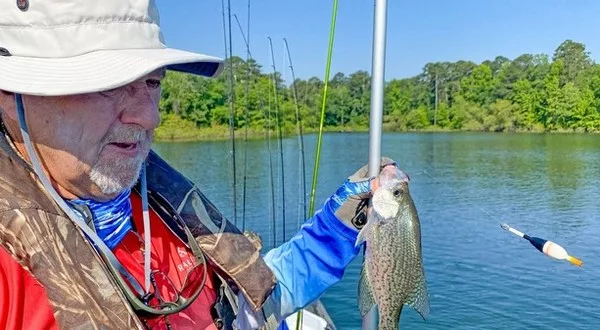
Photo courtesy of the Arkansas Game and Fish Commission
The U.S. Fish and Wildlife Service has followed trends in the outdoors since 1955 by conducting the National Fishing, Hunting and Wildlife-Associated Recreation Survey about every five years.
In the recent survey, 516,000 Arkansans, about 28 percent of residents, aged 16-34 stated they fished. Thirty percent of men and 15 percent of women in Arkansas stated they fished, spending $3.8 billion in 2022. The survey showed Hispanics had the highest participation rate at 28 percent. And about 391,000 people came to Arkansas to go fishing.
Nationwide, about 15 percent of Americans 16 and older fished an average of 20 days during 2022. Sixty-seven percent of them were male, seventy-five percent of the demographic being White and 36 percent aged 25-44.
When it came to hunting, approximately 270,000 Arkansans, around 19 percent, participated. Eighteen percent of men and six percent of women hunted in Arkansas, spending around $1.7 billion. Around 127,000 people from other states came to Arkansas to hunt.
Nationwide, about 5.5 percent of Americans hunted in 2022, and 80 percent of those pursued big game. Hunters averaged 12 days hunting big game and eight days chasing migratory birds, spending an average of $857. Seventy-seven percent of hunters were male and 35 percent were 55 or older.
Wildlife watchers had a 64 percent turnout in the state with including 69 percent of men and 60 percent of women. About 1.2 million people came to see wildlife in Arkansas, averaging $7.1 billion spent.
Fifty-seven percent of Americans engaged in wildlife watching. Birding was the most popular activity averaging 78 days in 2022. Forty-four percent traveled to observe birds, spending an average of $2,188.
Forty-seven million Americans participated in sport-shooting in 2021, Nineteen million participated in archery and 48 million took part in motorized boating.
According to Jessica Feltz, Arkansas Game And Fish Commission conservation social scientist, the survey results were not compared to previous surveys due to “changes in the sampling design and how questions were asked.”
For more information about the results of the survey, visit USFWS survey site.
WebReadyTM Powered by WireReady® NSI










